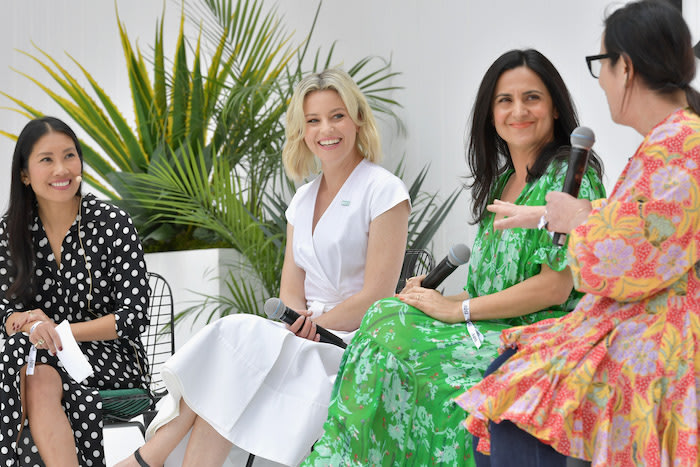
The Business of Fashion’s #BoFWest: 4 influences on fashion’s future
Hollywood and technology: How are these two industries intersecting to change and shape new trends in the business of fashion?
Entrepreneurs and executives gathered in Los Angeles recently to consider this combination of influences as part of The Business of Fashion’s West Coast summit (BoF West), a one-day conference devoted to learning from innovators in the industry. Speakers included tennis star and fashion entrepreneur Serena Williams, actress Elizabeth Banks, and founders from RAD, Allbirds, and Good American, among others.
The event was cosponsored by Affirm, and several leaders from the company attended the event and shared key takeaways, summarized below.
1. Look to Los Angeles as a great model for entrepreneurialism and convergence of sectors.
Los Angeles is having a moment right now, and its unique influence took center stage in one of the BoF West panel discussions. Renowned for imagination, artistry, and reinvention, the city is home to a wide range of industries. Leaders from local technology, fashion, health care, and entertainment companies discussed the characteristics—the anything-is-possible attitude, cultural and multi-industry richness, and more—that make Los Angeles a unique juncture for innovation right now, especially for fashion brands.
The entrepreneurial activity of Serena Williams, who happened to grow up in the Los Angeles area, is a great example of convergence in fashion, tech, and investing.
At BoF West, she explained the idea behind her S by Serena fashion brand was to create an e-commerce experience that offers authentic and high-quality clothes “for people who look like me,” delivered to their doors. But she also wants to effect wider change through the venture capital fund she started in 2014. At that time, she noted, less than 2% of funding went to startups headed by women or people of color. Her fund now makes this demographic of entrepreneurs a priority.
2. Consumers prefer brands that align with their values.
“The more integrity you exhibit, the more people connect with your brand,” said Carineh Martin, co-founder of RAD, an initiative that advocates using the red carpet for social good. During a panel on “The Social Power of the Red Carpet,” she discussed how RAD brings together talent and brands for a larger social purpose to resonate deeper with consumers.
Actress, producer, and director Elizabeth Banks, took a page from that playbook by announcing the white dress she was wearing came from thredUP (an Affirm partner) in support of Dress for Success, a nonprofit that empowers women to achieve economic independence with professional attire and tools to succeed at work.
Affirm’s research backs up the claim that consumers are moving toward shopping based on a brand’s values and transparency. In our 2018 fall fashion survey, 74% of shoppers said it’s important products they buy be ethically made, and 77% were willing to pay more for it.
3. Direct-to-consumer (DTC) brands are on the rise, in part because they fill a hole in the market for mission-driven, creative solutions.
Allbirds’s co-founder and co-CEO, Tim Brown, created the company as a way to make shoes from more sustainable materials, and has helped disrupt the industry as a result. But even he knows he won’t be the last DTC brand to drastically shift the fashion industry.
“Big changes are coming in the form of a revolution in the way things are made,” he said. “And we like to think that we’re a small part of it.”

Emma Grede, co-founder and CEO of Good American (an Affirm partner), started her business in 2016 because many plus-size women had a hard time finding a perfect pair of jeans. She said the business sold $1 million worth of denim on its opening day.
Allbirds and Good American, among other DTC brands, have also started opening stores or experimenting with pop-up shops, which may transform the sector even more by creating unique local experiences. While obviously women want to be able to try on a pair of jeans before they buy, Grede said, the store’s aim is more about access and inclusivity by giving a high-quality customer experience to people of all sizes.
4. Customer data and feedback drive innovations for fashion brands.
Following in the footsteps of many tech companies, some fashion brands have started to iterate their products based on customer feedback and testing. Even online customer reviews are starting to shape business decisions.
Allbirds’ Tim Brown revealed there were roughly 27 iterations of an Allbirds shoe style, and each was driven by customer feedback. The company’s production process is much closer to the development of software than traditional shoemaking, he said.
Good American developed an entire new size based on customer feedback and data from returns. Traditional women’s sizes are offered in even numbers (i.e., 2-16), but Grede saw a pattern of returns emerged from customers who had purchased sizes 14 and 16—often after the customer had bought each size in succession. In response the company took a risk and made size 15. It’s the company’s third highest seller, Grede said.
While these and other tech-inspired innovations may shape better merchandise, the customer remains a driving force in many of the fashion industry trends highlighted at BoF West. Read more coverage of the event on The Business of Fashion’s website.
Also:Watch or listen to Serena Williams’ full presentation on the BoF West stage
Photo credits: Getty Images for The Business of Fashion. Elizabeth Allin and Kelly Specht contributed to this report.




